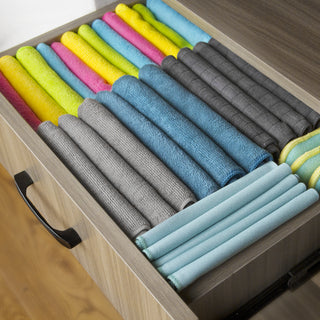In the realm of cleaning, microfiber cloths have gained significant popularity and are often the go-to choice in many cleaning scenarios. Despite microfiber's technological edge and various advantages over traditional cotton, it's not uncommon to find a mix of both cotton and microfiber cloths in the storage of cleaning teams.
Marita Nash, with her experience as the director of environmental services and linen at Hunterdon Medical Center in Flemington, New Jersey, emphasizes the importance of choosing the right cleaning material. "Achieving the best cleanliness in every area requires selecting the right tools, ensuring they are accessible to the cleaning staff, and that they are used effectively," she advises.
When considering the acquisition of new cleaning materials, such as cloths and mops, it's crucial to recognize the distinctions between cotton and microfiber, as well as the benefits of both reusable and single-use options.
The Comparison Between Microfiber and Cotton Cotton, a natural fiber, contrasts with microfiber, which is synthetic, usually made from a blend of polyester and nylon. Microfiber strands are extremely fine, about 1/100th the width of a human hair and significantly thinner than cotton fibers.
Cotton vs. Microfiber: Pros and Cons in Cleaning
Cotton's advantages in cleaning include its breathability, non-abrasive nature, and affordability. However, its downsides are significant. Cotton tends to move dirt and debris around rather than removing it and, being organic, it's prone to retaining odors and bacteria. Additionally, cotton requires a break-in period to remove the natural oils, dries slowly, and often leaves behind lint.
In contrast, microfiber stands out for its impressive absorbency—it can hold up to seven times its weight in water—making it highly effective in removing dirt from surfaces. It boasts a long lifespan if properly cared for and doesn't leave lint. However, microfiber does come with higher initial costs and requires special laundering practices.
Despite microfiber's apparent advantages over cotton, many still prefer cotton. Darrel Hicks, an industry consultant and author, attributes this to a general resistance to change. He expresses surprise at the continued use of cotton, given that microfiber clearly outperforms it in many aspects.
“People are resistant to change,” says Darrel Hicks, industry consultant and author of Infection Prevention for Dummies. “I can’t believe people are still holding onto cotton as being a viable product when it just doesn’t stand up to microfiber.”


